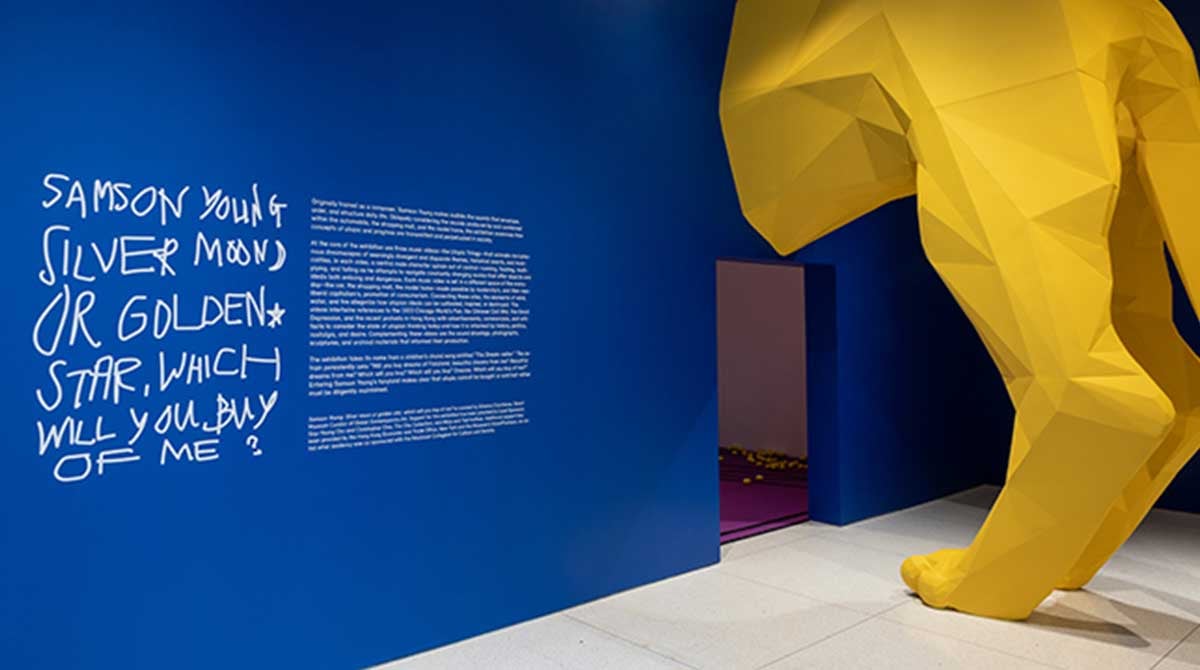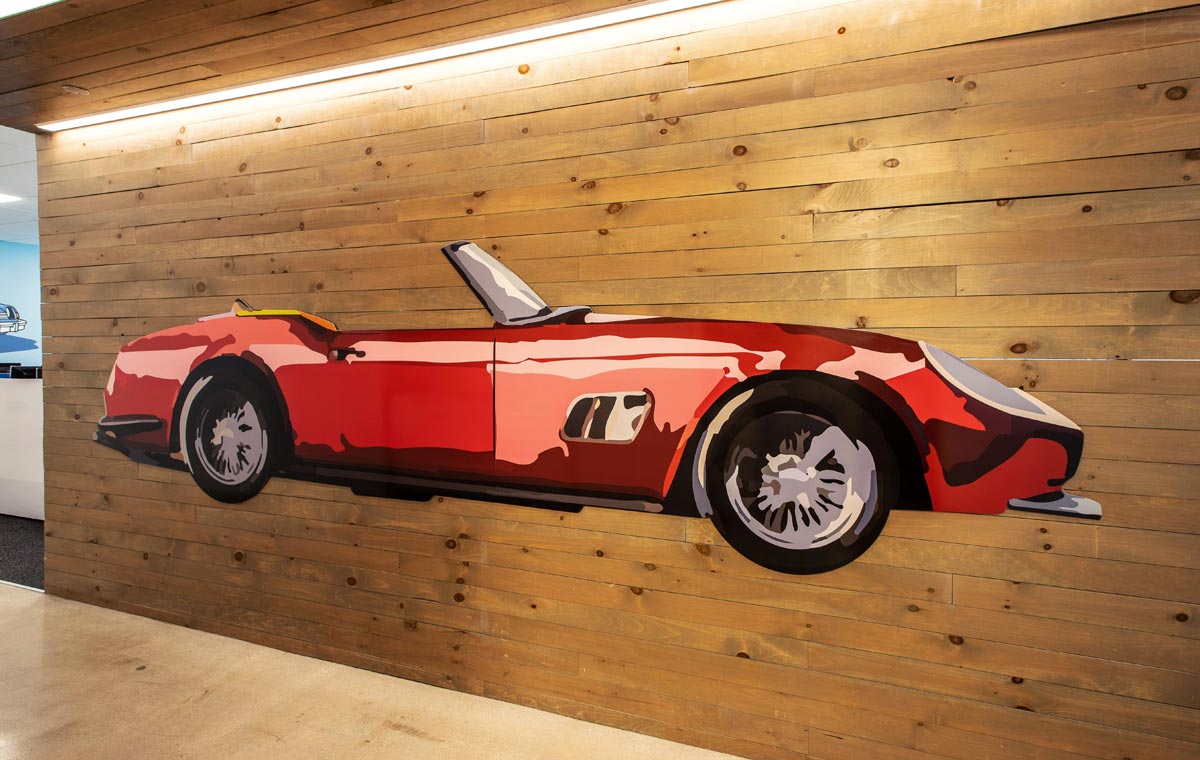Everywhere people go, their surroundings communicate with them. Visual inputs tell them a story about the place and the people behind it/who built it. Signs and symbols guide us through a space or tell us its purpose. Environmental graphic design is the process of managing what a built environment communicates with intentionality. Brands use environmental graphic design to represent their identity and ensure that the people who visit their offices, stores, or other physical spaces have a positive experience.
What does your brand’s space say to the people who visit it? In this article, find out how environmental graphic design helps you send the right message.
What is environmental graphic design?
Environmental graphic design (EGD) concerns the selection and placement of two-dimensional visual elements such as signs, wayfinding, artwork, and murals, or other displays in a built environment.
Environmental graphic design may be as simple as selecting the colors and textures of the walls in a space. But it more often encompasses much more. Color, typography, imagery, materials, and textures each contribute to the visual environment. This environmental graphic design of a space, in turn, impacts how people experience the space.
Environmental graphic designers apply a holistic approach to managing graphics within a space. The process involves many design disciplines including graphics, architecture, industrial, and commercial interior design. Because of the approach’s focus on building a unified narrative for visitors to a space, it is sometimes also called experiential graphic design. An environmental graphic design company doesn’t just create graphics for its clients, it works with the client to understand their brand and how people will use the designed space.
Why environmental graphic design is important for brands
Why is EGD an essential part of a brand’s spatial design? There is no escaping that what people see influences how they feel and behave. This effect happens whether or not the space is designed with intentionality.
If you aren’t controlling the narrative of your brand’s space, it’s controlled by chance.
A space’s environmental graphic design communicates both directly and indirectly. Parts of the design may influence people’s moods or trigger subconscious responses, while others provide them with straightforward information.
Signs and symbols, colors, patterns, and even different materials become part of a system that guides and instructs people who use the space. All the visual elements work together to improve visitors' understanding of the place and the people who built it and sets an emotional tone.
Environmental graphic design isn’t just about wayfinding and setting a mood, either. Graphic design also reinforces your brand identity and personality. Additions such as a company history wall, branded wall murals, or other elements help create a cohesive space that tells your story and creates an immersive experience for visitors.
Environmental graphic design is especially critical to establishing a presence when brands create a temporary or new space. For example, coordinated signs, color schemes, and images not only draw attention to brand activations or pop-ups but also make those spaces more memorable (and worthy of posting about on social media).
What types of environmental graphic design do brands use?
There are many types of environmental graphic design through which brands express their personality and deliver excellent experiences to the people who work in or visit their space.
Examples of where environmental graphic design is used include:
- Informational signs. Signs are essential to keep those who use a space safe. They can also enrich those people’s experience by sharing interesting, useful or entertaining data.
- Wayfinding systems. Text-based signs, symbols on walls and floors, color and pattern cues, and other visual pieces help people independently navigate a space.
- Wall and glass graphics. These large flat surfaces are a perfect space to communicate by adding color, text or images. Etching, a layer of color or an application of appliques can provide a sense of privacy to a glass wall or window. Colorful graphics on a store window can attract visitors looking in from the outside.
- Murals. Murals present companies with an opportunity to make a big statement while enhancing the visual appeal of their space. Some murals or other fine art are installed solely for their artistic value while others are used to tell the organization’s story or present its values.
- Digital displays. Dynamic multimedia displays allow businesses to communicate relevant information quickly. Today’s digital display options include small room signs and large integrated LED walls that update in real-time.

This wall at the Smart Museum becomes a part of the experience, providing visitors with information and setting the mood through the combination of engaging colors and typefaces.
5 ways organizations use environmental graphic design
- All branded environments benefit from graphic design to communicate the brand and set the tone for the space.
These environments may include retail stores, a store-within-a-store (SWAS) or retail pop-ups, brand or sponsorship activations, corporate offices and non-office workspaces such as warehouses or manufacturing facilities, service delivery locations such as health care offices, stadiums and arenas, galleries, location-based entertainment (LBE), themed, educational or art experiences.
- Exhibition displays may include wayfinding graphics as well as graphics meant to educate, entertain, and engage visitors.
- Interactive experiences that use environmental graphic design to create a fully immersive environment. Two-dimensional wall, ceiling, and floor applications can completely transform a space. Instructional signs can tell visitors how to interact with the other parts of the experience and find their way through it.
- Public installations can be created using 2D graphics or 2D graphics can complement and support a public art installation.
- Placemaking and identity design rely on environmental graphic design to share the story of the place, helping those who visit gain a deeper understanding of the location’s significance.
Create a positive brand experience with purposeful environmental graphic design
Graphics are an integral part of a space’s overall design and experience. Creating a positive environment for the people who will work in and visit your space starts with a purposeful design plan.
At Bridgewater Studio, we help clients elevate their commercial, retail, and corporate interiors with bespoke environmental graphic design, custom wayfinding, and multi-faceted digital fabrication and production services. As a full-service strategy, design, and production studio, we take projects from inception to installation providing clients a seamless, stress-free experience. Discover how we can help bring your next project to life by booking a no-obligation strategy session with us today.


.png)
.png)
.png)








